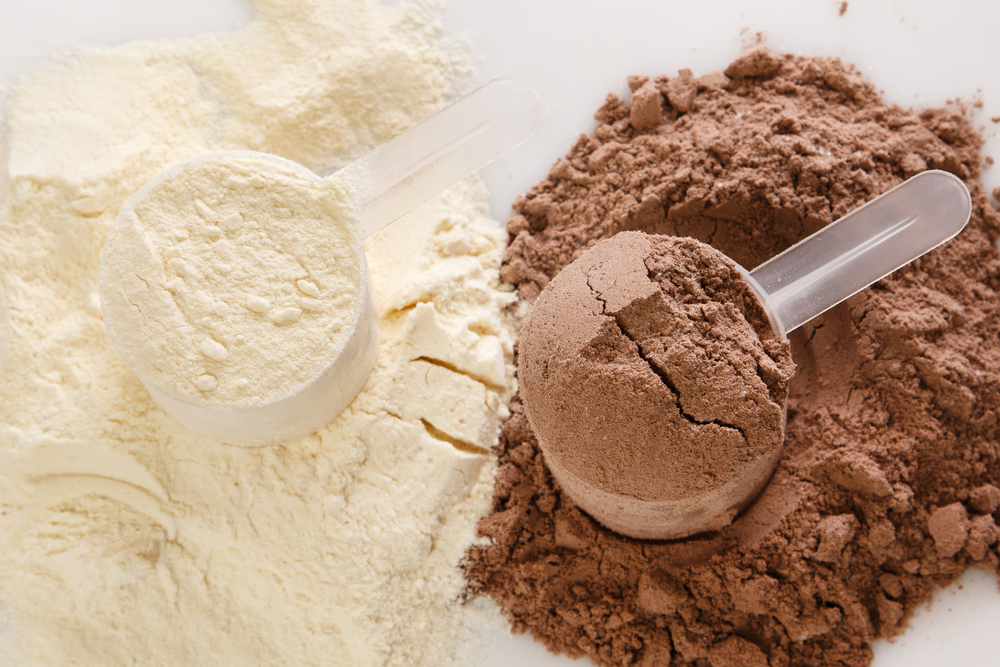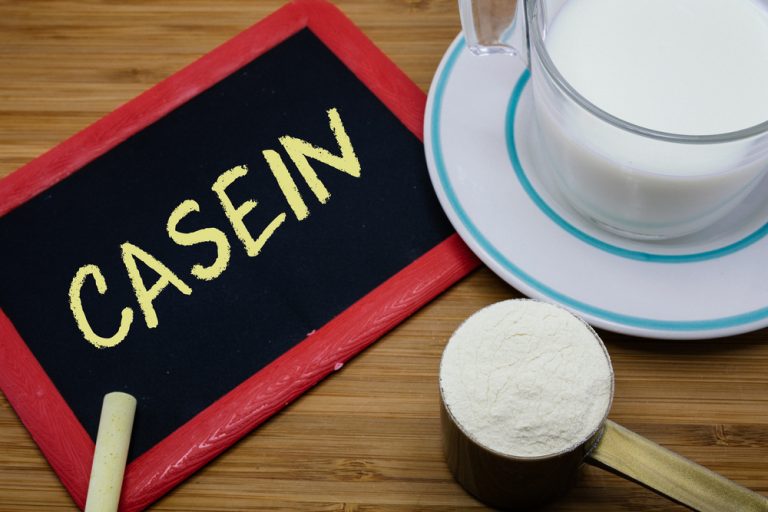Casein is the most popular type of protein supplement alongside whey. It has strong anti-catabolic properties that inhibit the breakdown of muscle mass. An important advantage of casein is its long digestion, which causes the body to be supplied with adequate doses of amino acids for many hours, which is needed for muscle development. See how casein works and how to dosage this supplement.
What Casein is actually?
Casein is the most important protein in milk - it is over ¾ of all the amino acids contained in it. It is obtained by dehydrating the milk and removing as much lactose and fat as possible. As a result of this process a white powder is formed, which is additionally enriched with flavour enhancing sweeteners.
Casein obtained in this way is a completely natural product. The benefits of using it can primarily be exercised by gym goers who would like to provide their muscles with constant protein supply, especially at night and between workouts.
Casein - how does it work?
Casein reaching the stomach is coagulated (cut) under the effects of gastric acid. The result is a mucus clot that is slowly digested by the body. This process can take up to 5-7 hours - at this time, the amino acids that supply the muscles in the necessary building material are gradually released into the bloodstream.
Such a long absorption time of casein, however, has its drawbacks. Although protein supply has remained stable for many hours, it is lower than that of whey protein. In other words - whey results in short-term, quick protein discharge, whereas casein is a long-term and gradual process. For this reason, casein has less anabolic effects than whey, but it is characterized by strong anti-catabolic properties. It is estimated that it can inhibit the breakdown of muscle mass by about 40%.
Types of Casein - Micellar Casein and Calcium Caseinate
Casein is available in two forms:
- micellar casein
- calcium caseinate
The difference between nutrients lies in the way they are extracted from milk - micellar casein is definitely much better.
Micellar casein
Micellar casein is obtained by degreasing and purifying milk from contaminants and lactose. Micellar casein is obtained at low temperature by natural microfiltration (a process that runs without the use of chemicals). This way, casein with intact peptide structure with preserved high levels of L-glutamine and BCAA is obtained. The process of obtaining micellar casein is more expensive and longer than that of caseinate calcium.
Calcium caseinate
If you see the name "caseinate" on the packaging, you are dealing with calcium caseinate, not micellar casein. Calcium caseinate is the acid casein produced in the cheese production process - as a result of pasteurisation and milking by using high temperature. Under the influence of these processes, the structure of the protein breaks down and its biological activity decreases. However, the full sequence of amino acids is preserved. During cheese production, milk is seasoned with rennet. To get calcium caseinate, before adding milk, calcium hydroxide should be added to it to neutralize acidic pH of acidified milk. Calcium caseinate is distinguished by being high (17%) in L-glutamine content. It’s worth adding that calcium caseinate as a night conditioner is less expensive than micellar casein because its digestion time is considerably shorter than that of micellar casein.
Marketed in the form of pure micellar casein (they have an exceptionally sweet taste) or calcium caseinate, micellar casein and whey protein supplements as well as micellar casein and calcium caseinate supplements.

Casein - dosage
Due to the long-term absorption of casein, which is also in small amounts, this nutrient should not be used after training. The body then needs large amounts of easily assimilable protein to quickly compensate for losses caused by intensive effort. For this purpose whey protein is advised. It’s recommended that you eat casein before bedtime. Thanks to that, at night, when the body lacks food, muscles are constantly supplied with protein, which inhibits the process of their disintegration. Another possible time to use casein is the time between workouts when we cannot eat a full meal.
Daily dosage of casein should be between 0.8 and 2.2 g per kilogram of body weight depending on the workout. The single dose should not exceed 30 g (higher amounts may cause digestive system disorders).
Casein - how to choose the best supplement?
In order to buy a valuable casein based nutrient it is important to analyse its composition carefully - preferably if it’s short, and micellar casein is in the first place. A large number of ingredients signal that the product is a mixture of many different proteins, of which only a small portion exhibits a casein-like effect.
Casein - side effects
Casein should not be eaten by people allergic to milk, because in most cases this type of protein may cause allergies. Precaution should also be given to people who are hypersensitive to dairy products and who suffer from chronic indigestion. Even in healthy people, excessive intake of casein can cause a number of side effects such as digestive disorders, bloating, abdominal pain, diarrhoea, vomiting. At recommended doses, the risk of side effects is low.






